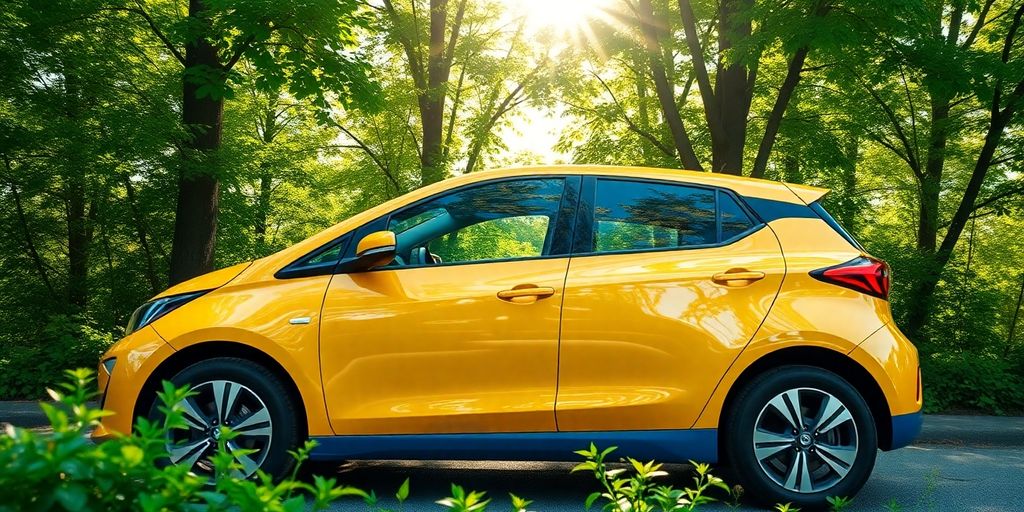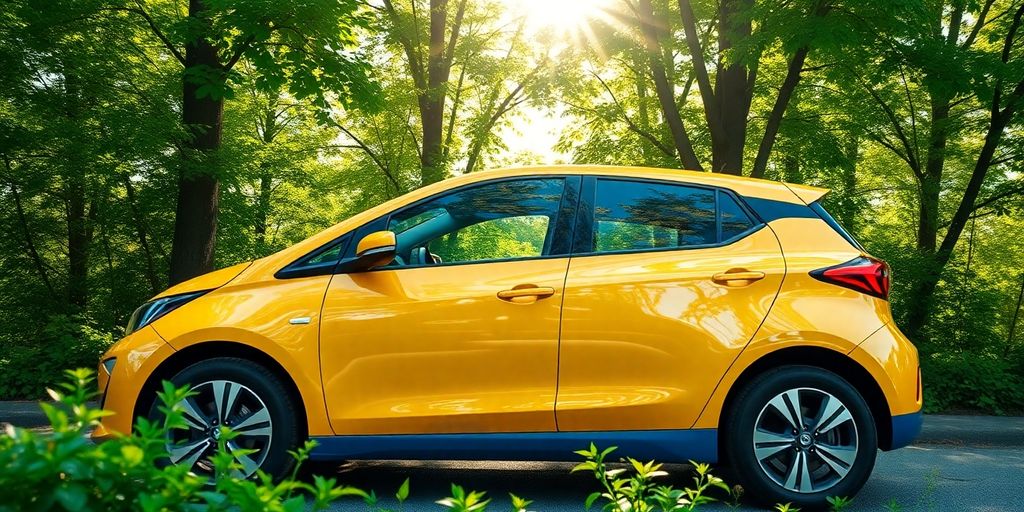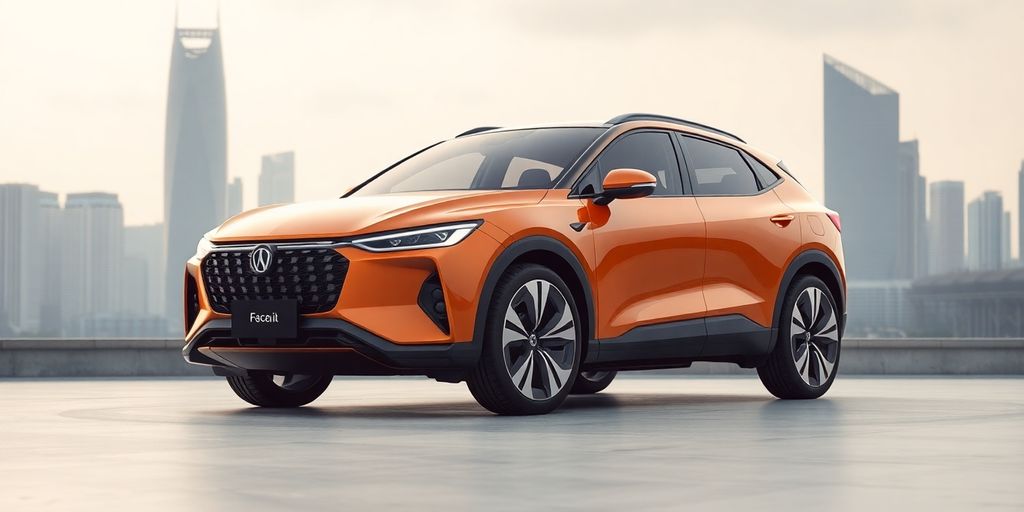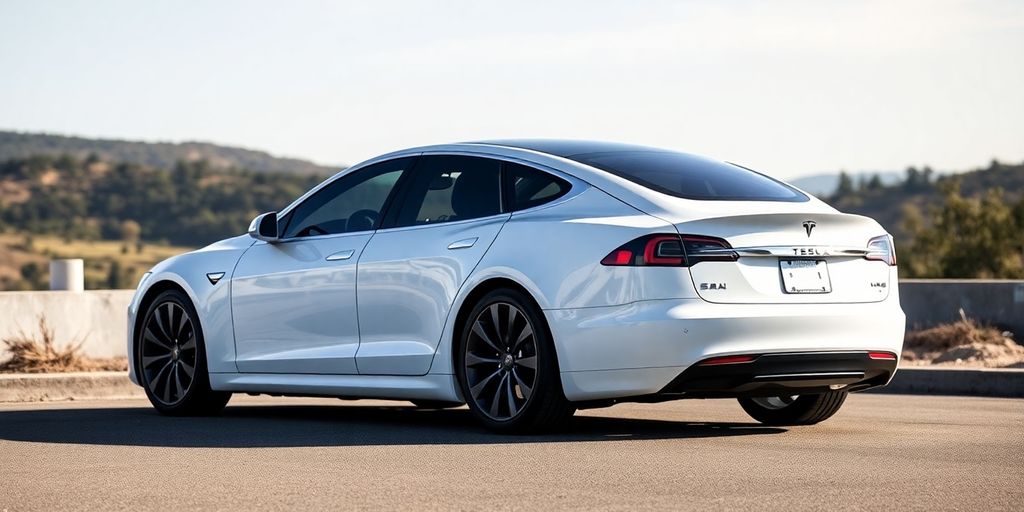Are Electric Cars Really Better for the Environment? Debunking Common Myths and Facts

Electric cars have become a hot topic in discussions about environmental impact. Many people wonder: are electric cars really better for the environment? With so much information out there, it can be hard to separate fact from fiction. In this article, we’ll tackle common myths and provide facts about electric vehicles (EVs), their emissions, battery sustainability, and more. Let’s dive into the truth about electric vehicles and their environmental benefits.
Key Takeaways
- Electric cars produce fewer emissions over their lifecycle compared to gasoline vehicles.
- Battery technology is improving, making EVs more sustainable and efficient.
- The electrical grid can handle the increased demand from electric vehicles with proper planning.
- EVs can be cost-effective in the long run despite higher upfront costs.
- Public perception often misrepresents the environmental benefits of electric vehicles.
Understanding Electric Vehicle Emissions
Lifecycle Emissions of Electric Cars
Okay, so when we talk about how good electric cars are for the environment, we can’t just look at what comes out of the tailpipe—because, well, there isn’t one! We need to consider the entire lifecycle. This means everything from digging up the materials to build the car and its battery, to manufacturing, shipping, using it, and eventually, what happens when the car is no longer roadworthy. It’s a much bigger picture than most people realize.
- Raw material extraction.
- Manufacturing of components.
- Vehicle assembly.
Comparing Emissions with Gasoline Vehicles
Electric cars win in most comparisons, but it’s not always a landslide. A lot depends on where the electricity comes from. If it’s from a coal-fired power plant, the benefits are less obvious than if it’s from solar or wind. Even with a less-than-perfect energy grid, EVs often still come out ahead because they’re just more efficient at using energy than gasoline cars. Gasoline cars waste a lot of energy as heat. Also, don’t forget the emissions from drilling for oil, refining it into gasoline, and shipping it to gas stations. That adds up!
The Role of Renewable Energy in EV Emissions
This is where things get really interesting. The more renewable energy we use to power our electric grids, the cleaner EVs become. It’s a direct link. As solar and wind farms pop up, the carbon footprint of driving an EV shrinks. This is why many see EVs as a key part of a cleaner future. It’s not just about the cars themselves, but about transforming how we generate and use energy. The IPCC says that investments in EVs are “convertible” into low-carbon assets, even in countries with very carbon-intensive electricity.
Switching to electric vehicles is critical to cutting down on tail-pipe emissions. Burning gasoline and diesel fuel contributes particulate matter, smog-forming nitrogen oxides and volatile organic compounds, as well as carbon dioxide, into the air. These pollutants can cause asthma flare-ups, lung cancer, heart and lung damage and even premature death.
Debunking Myths About Electric Vehicle Batteries
Sustainability of EV Batteries
There’s a lot of chatter about whether electric vehicle batteries are actually sustainable. Some folks worry about the materials used and the environmental impact of making them. However, it’s important to look at the full picture. The lifecycle emissions of an EV, including battery production, are generally lower than those of a gasoline car. Plus, there’s a growing focus on using more sustainable materials and improving manufacturing processes.
- Sourcing materials responsibly is becoming a priority.
- Manufacturers are exploring alternative battery chemistries.
- Reducing the carbon footprint of battery production is a key goal.
It’s not perfect, but the trend is definitely toward more sustainable EV batteries. The industry recognizes the need to minimize environmental impact and is actively working on solutions.
Battery Recycling and Reuse
One of the biggest concerns is what happens to EV batteries at the end of their life. Are they just going to end up in landfills? Thankfully, the answer is no. EV battery recycling is becoming more common, and there’s also a lot of interest in reusing batteries for other purposes, like energy storage. This can significantly extend the life of the battery and reduce waste.
- Recycling technologies are improving to recover valuable materials.
- Second-life applications for batteries are being developed.
- Regulations are being put in place to promote battery recycling.
Battery Lifespan and Performance
Another myth is that EV batteries don’t last very long and that their performance degrades quickly. While it’s true that batteries do degrade over time, modern EV batteries are designed to last for many years and miles. Most manufacturers offer warranties of at least 8 years or 100,000 miles. Plus, advancements in battery technology are constantly improving lifespan and performance, even in challenging conditions.
| Factor | Impact on Battery Life | Mitigation Strategies |
|---|---|---|
| Extreme Temps | Reduced capacity | Thermal management systems, avoid extreme charging |
| Frequent Fast Charging | Accelerated degradation | Limit fast charging, use slower charging when possible |
| Deep Discharges | Shortened lifespan | Avoid fully discharging the battery |
Electric Vehicles and the Power Grid
Impact on Electrical Grid Stability
There’s a common worry that if everyone switches to electric vehicles, the power grid will collapse under the strain. But, it’s not that simple. EVs can actually help stabilize the grid. They can act like giant batteries on wheels, storing energy when demand is low and feeding it back when demand is high. This is called vehicle-to-grid (V2G) technology, and it’s pretty cool. Plus, most EV owners charge their cars overnight, when electricity demand is typically lower, which helps balance things out.
Charging Infrastructure Development
Okay, so maybe the grid won’t collapse, but what about actually finding a place to charge? It’s true that the charging infrastructure needs to grow, but it’s happening fast. There are already a lot of charging stations, and more are being built all the time. Most EV owners do the bulk of their charging at home, which is super convenient. But for longer trips, public charging stations are becoming more and more common. It’s not perfect yet, but it’s getting there.
Renewable Energy Integration
One of the biggest benefits of EVs is that they can run on renewable energy. If you charge your EV with solar or wind power, you’re essentially driving on sunshine or wind! This dramatically reduces your carbon footprint compared to driving a gasoline car. The more renewable energy we add to the grid, the cleaner EVs become. It’s a win-win situation.
EVs can support the grid by storing excess energy from renewable sources and giving it back when needed. Smart charging, where EVs charge during low demand, can cut the impact on peak electricity demand significantly.
Here’s a quick look at how EV electricity demand might grow:
- 2022: EVs used 110 TWh of electricity globally.
- 2030: Projected to rise to 1,150 TWh if climate pledges are met.
- 2050: EVs could add 12-14% to global electricity demand.
Cost Considerations of Electric Vehicles
Initial Purchase Price vs. Long-Term Savings
Okay, let’s be real, the sticker shock of an EV can be intense. You’re staring at a price tag that’s often higher than your average gasoline car. But here’s the thing: you gotta think long-term. The initial purchase price is just one piece of the puzzle. Over the lifespan of the vehicle, you start saving money. Think about it – no more gas station visits! Plus, EV prices are coming down, and that initial gap is shrinking.
- Lower fuel costs (electricity is generally cheaper than gasoline)
- Reduced maintenance (fewer moving parts mean fewer repairs)
- Potential government incentives (tax credits, rebates, etc.)
It’s like buying a house. The down payment might sting, but you’re building equity and avoiding rent payments down the road. With EVs, you’re investing in a car that saves you money over time, even if it costs more upfront.
Maintenance Costs Compared to Gasoline Cars
This is where EVs really shine. Gasoline cars are basically ticking time bombs of potential repairs. Oil changes, spark plugs, exhaust systems – it all adds up. EVs? Not so much. They have way fewer moving parts, which means less stuff to break. Regenerative braking also extends the life of brake pads, saving you even more money. It’s a simpler machine, and that translates to lower maintenance bills. A 2020 study indicated that EV drivers spend about half on maintenance and repairs compared to gasoline car drivers.
Government Incentives and Subsidies
Don’t forget about the free money! Governments are throwing incentives at EV buyers left and right. We’re talking federal tax credits, state rebates, and even local utility incentives. These can significantly reduce the electric vehicle’s price, making them way more affordable. Do your homework and see what’s available in your area. It could be the difference between buying an EV and sticking with gasoline. These incentives are designed to encourage adoption and help offset the higher initial cost. They’re worth looking into!
Electric Vehicles in Different Weather Conditions
Performance in Cold Weather
Okay, so let’s talk about EVs when it gets chilly. One thing I’ve noticed is that cold weather definitely impacts the range. It’s not a deal-breaker, but something to keep in mind. You’re using more energy to heat the cabin and the battery itself doesn’t perform as well when it’s freezing. It’s kind of like how your phone battery drains faster when you’re out in the snow.
Range Anxiety and Daily Use
Range anxiety is a real thing, especially when you’re new to EVs. I remember when I first got mine, I was constantly checking the battery percentage. But honestly, for most daily commutes, it’s not an issue. Most EVs can travel over 200 miles on a full charge, and the average person drives way less than that each day. Still, planning your trips is important, especially if you live in a rural area with fewer charging stations.
Charging Solutions for Extreme Weather
Charging in extreme weather can be a bit of a pain, I won’t lie. If you’re dealing with snow or ice, just make sure the charging port is clear before you plug in. And if you’re in a super hot climate, try to park in the shade while charging to keep the battery cool.
One thing I’ve learned is that pre-conditioning the battery can really help. Basically, you can use your car’s app to warm up the battery before you leave in the morning. This can improve range and performance in cold weather. It’s a small thing, but it makes a big difference.
Here’s a quick rundown of things to consider:
- Use seat heaters instead of blasting the cabin heat.
- Plan your routes to include charging stations.
- Consider a home charging setup for convenience.
The Future of Electric Vehicles

Advancements in Battery Technology
Battery tech is where it’s at for EVs, and things are moving fast. We’re talking about solid-state batteries that promise higher energy density, meaning more range. Also, they’re supposed to be safer. Then there’s the whole push for better lithium-ion batteries, making them cheaper and more efficient. It’s not just about range, though. It’s about faster charging times, too. Nobody wants to sit around for an hour waiting for their car to charge.
- Solid-state batteries: Higher energy density and improved safety.
- Lithium-ion advancements: Cost reduction and efficiency gains.
- Faster charging technologies: Reducing charging times significantly.
Predictions for EV Market Growth
The EV market is expected to explode in the next few years. It feels like every car company is jumping on the bandwagon, and governments are pushing for it with incentives and regulations. Some analysts are saying that EVs could make up a huge chunk of all car sales by 2030. It’s not just about cars, either. Electric trucks and buses are going to be a big deal, especially for city transportation. The Zeekr and Tesla comparison shows how different companies are approaching the EV market, and that’s just the beginning.
The shift to EVs is not just a trend; it’s a fundamental change in how we think about transportation. The convergence of technological advancements, policy support, and consumer demand is creating a perfect storm for EV adoption.
Policy Changes and Their Impact on Adoption
Governments are playing a big role in how quickly EVs take over. Tax credits, subsidies, and regulations are all pushing people to switch. Some countries are even planning to ban the sale of new gasoline cars in the next decade or so. That’s a pretty big deal. But it’s not just about carrots and sticks. Governments also need to invest in charging infrastructure to make it easier for people to own EVs.
- Tax credits and subsidies: Lowering the initial cost of EVs.
- Regulations and bans: Phasing out gasoline car sales.
- Infrastructure investment: Expanding the charging network.
Public Perception and Misconceptions

It’s interesting how much people think they know about electric vehicles. You hear all sorts of things, and it can be hard to sort out what’s true and what’s just plain wrong. A lot of the hesitation around adopting EVs comes down to simple misunderstandings and how they’re portrayed in the media.
Media Representation of Electric Vehicles
The media plays a big role in shaping what people think. Sometimes, the coverage is balanced, but other times, it seems like there’s a focus on the negative – like range anxiety or battery issues. This can create a skewed picture, especially if people don’t have personal experience with EVs. It’s important to look at different sources and not just rely on one news outlet. For example, EVs significantly cut lifecycle greenhouse gas emissions.
Common Misunderstandings About EVs
There are a few big myths that keep popping up:
- EVs are too expensive.
- Batteries don’t last long.
- Charging is a hassle.
These aren’t always true. The initial cost can be higher, but you save on fuel and maintenance. Batteries are getting better all the time, and charging infrastructure is expanding. It’s all about doing your research and seeing if an EV fits your lifestyle. Here’s a table showing potential savings:
| Expense | Gasoline Car | Electric Car |
|---|---|---|
| Fuel/Electricity | $2,000/year | $500/year |
| Maintenance | $500/year | $200/year |
The Role of Education in EV Adoption
Education is key to getting more people on board with EVs. The more people understand the technology, the benefits, and the realities, the more likely they are to consider making the switch. This includes:
- Providing clear information about costs and savings.
- Addressing concerns about range and charging.
- Highlighting the environmental benefits.
If people have the right information, they can make informed decisions. It’s about empowering them to see EVs as a viable and beneficial option, not just some futuristic pipe dream.
Final Thoughts on Electric Cars and the Environment
So, are electric cars really better for the environment? The answer is a resounding yes, but with some caveats. While they do have a smaller carbon footprint compared to traditional gas-powered vehicles, it’s important to remember that they’re not a perfect solution. The production and disposal of batteries still have environmental impacts. However, as technology improves and we shift to cleaner energy sources, the benefits of EVs will only grow. It’s clear that electric vehicles play a crucial role in reducing emissions and combating climate change. So, if you’re considering making the switch, know that you’re making a choice that’s better for the planet.
Frequently Asked Questions
Are electric cars better for the environment than gas cars?
Yes, electric cars produce less pollution than gas cars. They create zero direct emissions and have a smaller carbon footprint over their lifetime.
How are electric car batteries made?
Electric car batteries are made using materials like lithium, nickel, and cobalt. While their production has some environmental impact, recycling and better technology are improving their sustainability.
Can electric cars be used in cold weather?
Yes, electric cars can work well in cold weather. They may use more energy to heat the cabin, but they are still reliable and efficient.
How far can electric cars go on a single charge?
Most electric cars can travel over 200 miles on a full charge, which is enough for most daily driving needs.
Do electric cars cost more to maintain than gas cars?
No, electric cars usually cost less to maintain. They have fewer moving parts and don’t need oil changes, which saves money on repairs.
Will the power grid be able to support more electric cars?
Yes, the power grid can handle more electric cars. In fact, electric vehicles can help stabilize the grid by storing energy and providing it back when needed.








Responses